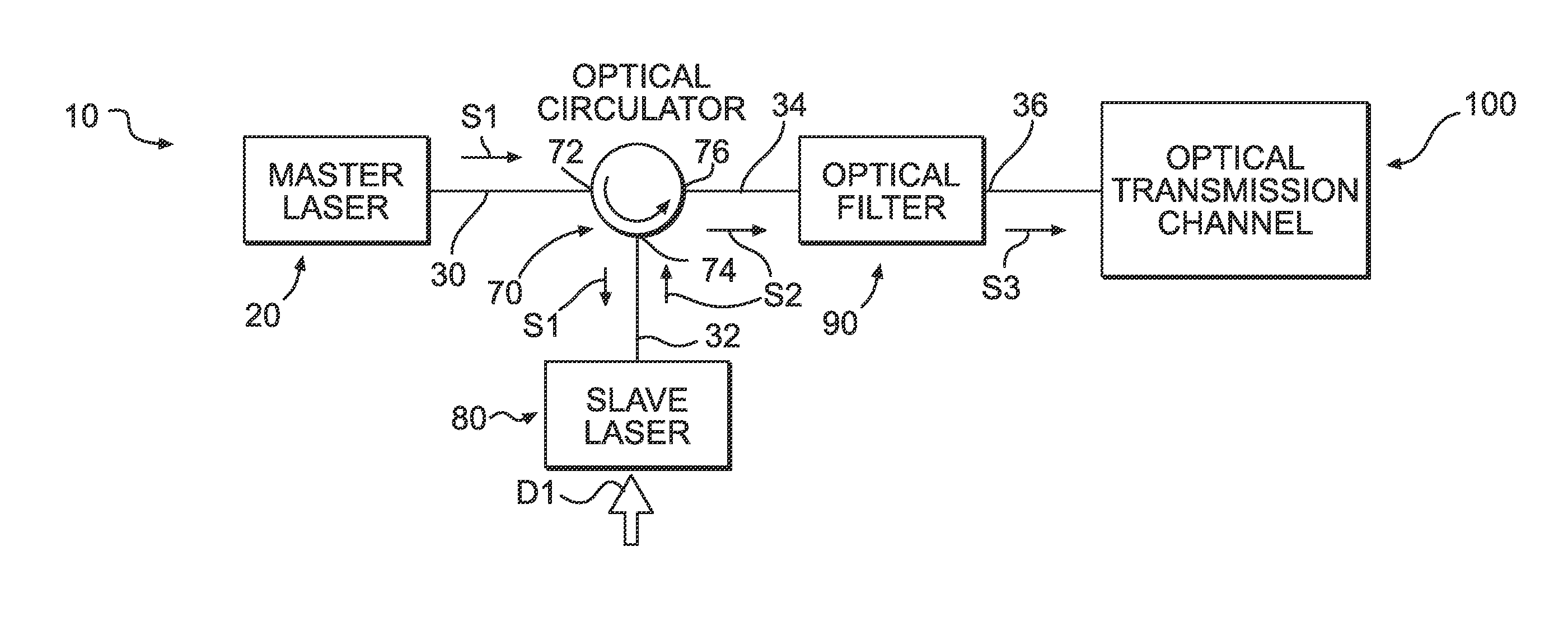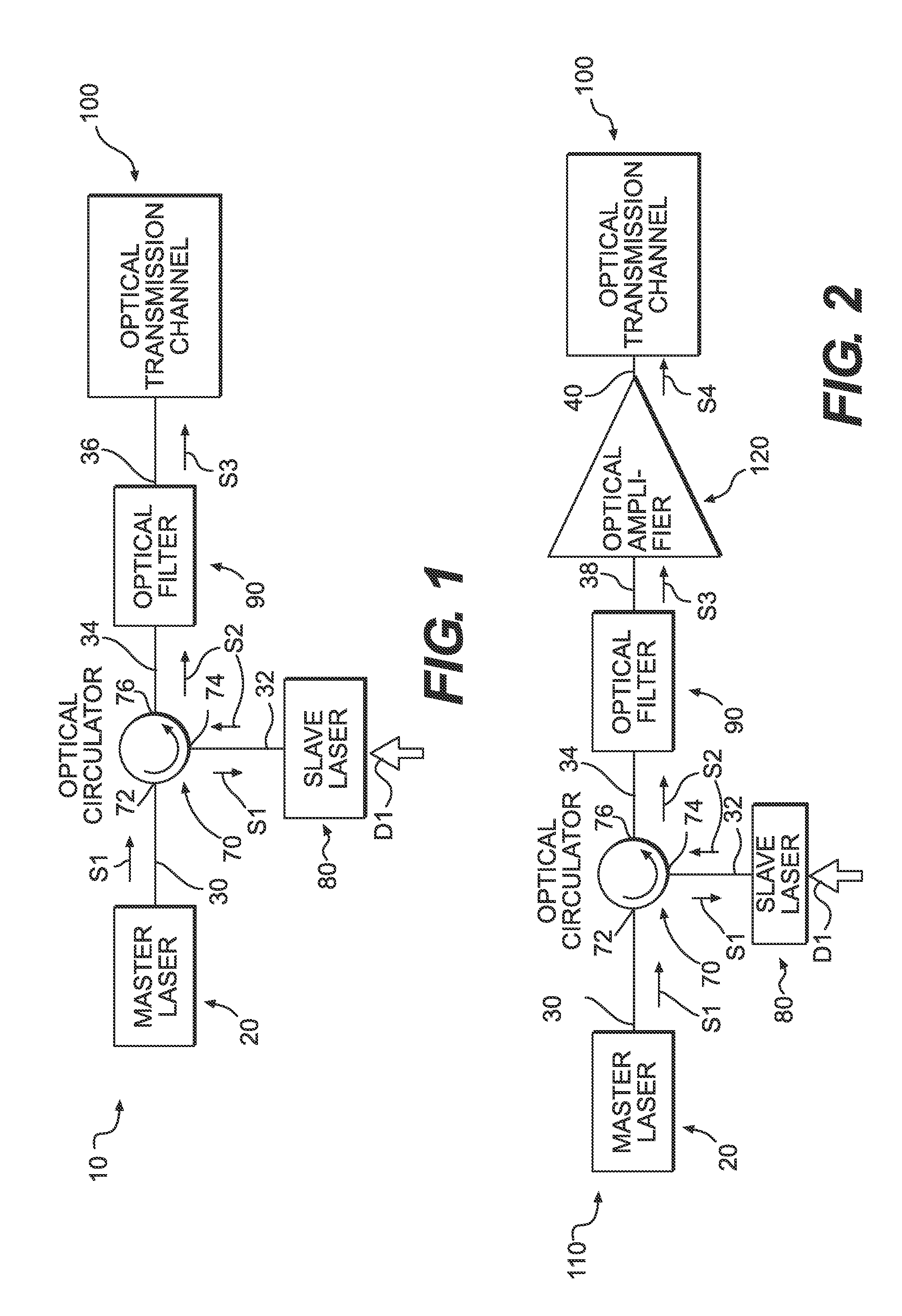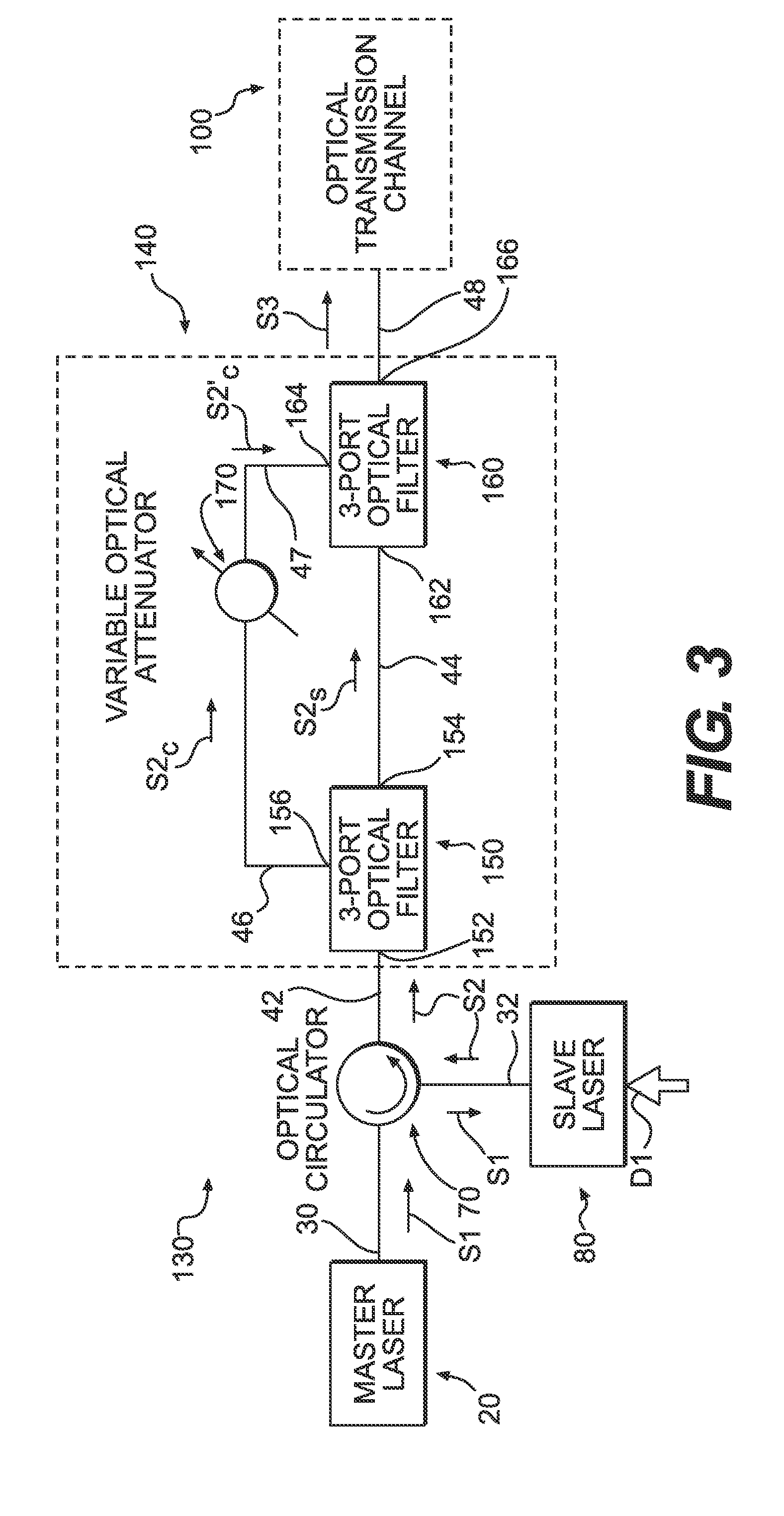Optical transmitters for mm-wave rof systems
a technology of optical transmitter and rof system, which is applied in the direction of electromagnetic transmission, semiconductor amplifier structure, semiconductor laser, etc., can solve the problems of low modulation depth, poor link efficiency, signal-to-noise ratio, etc., and achieves high optical link efficiency, high bit rate, and high spectral efficiency
- Summary
- Abstract
- Description
- Claims
- Application Information
AI Technical Summary
Benefits of technology
Problems solved by technology
Method used
Image
Examples
example 1
Conventional Transmitter without Equalization of VCSEL Output
[0074]An experimental setup of a conventional OIL VCSEL RoF transmission system was constructed as shown in FIG. 8. In this setup, a Head-End Unit or HEU 500 was coupled to a remote antenna unit or RAU 510 by optical fiber 520. The HEU 500 consisted of a pulse pattern generator PPG, a low pass filter LPF, a bias T B-T, a slave VCSEL, a high-power Master Laser, and a custom-made one-step 60 GHz electrical up-converter. The remote antenna unit 510 included an optical-to electrical converter O / E, a low noise amplifier LNA, and a bandpass filter BPF. The signal from the remote antenna unit 510 was down-converted to baseband by a one-step 60 GHz down-converter, and fed into a bit error rate tester (BERT) 560. The VCSEL was a 1540 nm single-mode buried tunnel junction (BTJ) VCSEL with a maximum output power of ˜3 mW, and ˜70% coupling efficiency to a lensed fiber. The ML was a high-power Distributed Feedback (DFB) laser, which w...
example 2
Transmitter with Bandpass Filtering / Equalization of VCSEL Output
[0085]Experimental Setup
[0086]To improve the sensitivity of the RoF system of Example 1 above, it was necessary to reduce the large CSR observed above. Thus, the experimental setup of FIG. 14 was constructed. The setup is generally arranged as a Head-End Unit 600 connected to a remote antenna unit 610 by optical fiber 620, which communicates with a 60 GHz wireless receiver 650. The arrangement included a pulse pattern generator PPG, arbitrary waveform generator AWG, low pass filter LPF, bias T B-T, band pass filter BPF, optical bandpass filters OBPF 1, OBPF 2 and OBPF 3, erbium doped fiber amplifiers EDFA, bit error rate tester (BERT) 660, and vector signal analyzer (VSA) 670. In this setup, a tunable filter was used to reduce the master carrier power. Given that the large CSR observed above was similar in value to the contrast ratio of typical tunable optical filters, placing the passband of a single optical bandpass f...
PUM
 Login to View More
Login to View More Abstract
Description
Claims
Application Information
 Login to View More
Login to View More - R&D
- Intellectual Property
- Life Sciences
- Materials
- Tech Scout
- Unparalleled Data Quality
- Higher Quality Content
- 60% Fewer Hallucinations
Browse by: Latest US Patents, China's latest patents, Technical Efficacy Thesaurus, Application Domain, Technology Topic, Popular Technical Reports.
© 2025 PatSnap. All rights reserved.Legal|Privacy policy|Modern Slavery Act Transparency Statement|Sitemap|About US| Contact US: help@patsnap.com



